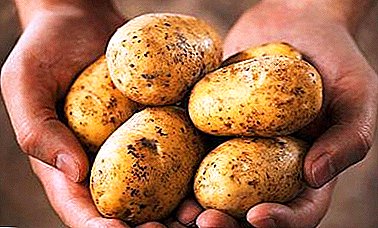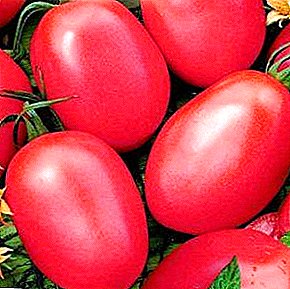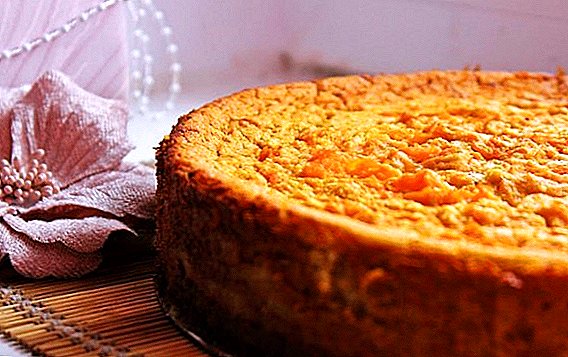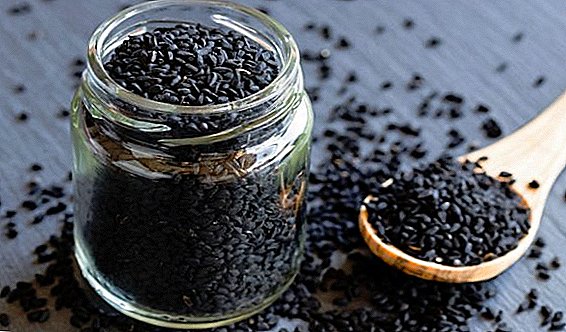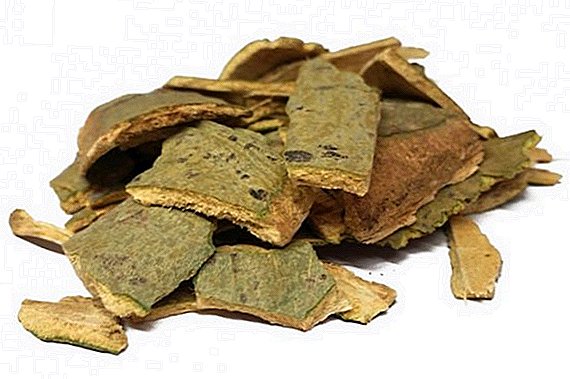 Aspen is a species of deciduous trees growing in the temperate zone of the Eurasian continent. Unpretentious to the soil and grows very quickly, so it is often used as an ornamental plant for landscaping parks and squares. But the tree is not famous for this: its bark, leaves and buds have long been used for medicinal purposes. It is about the medicinal abilities of aspen that we will tell in the article.
Aspen is a species of deciduous trees growing in the temperate zone of the Eurasian continent. Unpretentious to the soil and grows very quickly, so it is often used as an ornamental plant for landscaping parks and squares. But the tree is not famous for this: its bark, leaves and buds have long been used for medicinal purposes. It is about the medicinal abilities of aspen that we will tell in the article.
Chemical composition
The bark of the tree is rich in the following substances:
- glycosides (organic compounds of carbohydrate and non-carbohydrate fragments);
- organic acids;
- essential oil;
- tannins;
- bitterness;
- vitamin C;
- carotene (provitamin A);
- fatty acid;
- carbohydrates;
- flavonoids (vegetable organic compounds of the aromatic series);
- resinous substances;
- pectins (high molecular weight carbohydrates);
- mineral salts;
- sterols (natural organic compounds);
- wax;
- squirrels;
- lignans (phenolic compounds of plant origin).
Did you know? Aspen bark is used for tanning leather, and yellow and green paints are made from it.

Medicinal properties
They are due to the high content of biologically active substances in the aspen bark.
Therefore, it has such effects on the human body:
- anti-inflammatory (tannins, anthocyanins, flavonoids);
- emollient (mineral salts);
- astringent (tannins, wax);
- antimicrobial (glycosides, tannins, resinous substances);
- antitussive (glycosides);
- anthelmintic (resinous substances);
- hemostatic (coumarins);
- antipyretic (tannins, anthocyanins, flavonoids);
- diaphoretic (essential oil);
- diuretic (glycosides);
Medicinal drugs from juniper, swimsuit, lovage, stonecrop, milkweed, snake, chervil, turmeric, maple and safflower are also often used as a diuretic.
- antiseptic (coumarins, wax, resinous substances, glycosides);
- tonic (organic acids, vitamin C, carotene, carbohydrates, proteins);
- antiviral (glycosides, tannins, resinous substances);
- antibacterial (tannins, resinous substances);
- wound healing (resinous substances, wax);
- oncoprotector (carotene, coumarins);
- antirheumatic (vitamin C, mineral salts, proteins, anthocyanins, flavonoids).
What helps: what diseases
Used to treat:
- scurvy;
In the treatment of scurvy in traditional medicine they also use black currant, northern northern bedcloth, periwinkle, bail fruit, fir, eastern sverbigu, Chinese magnolia vine and red rowan.
- hernia;
- syphilis;
- feverish conditions;
- diseases of the digestive tract;

- prostatic hypertrophy;
- problems with the genitourinary system;
- problems with the nervous system;
- radiculitis, rheumatism;
- arthritis, arthrosis;
- gout;
- sore throats, gingivitis;
- burns, blisters;
- acne and other skin diseases;
- dandruff and excessive sweating;
- dysentery, diarrhea;
- colitis;
- oncological diseases;
- diabetes;
- pancreatitis;
- colds;
- malaria.
Check out the beneficial properties of white willow bark.

Use in folk medicine: the benefits
As you can see, in folk medicine, aspen bark easily fights with gastric problems, problems of the bladder, colds. In addition, she copes with gynecological and andrological problems.
For men
Male population is recommended to take decoctions and infusions when detecting problems such as:
- temperature rise;
- feeling weak;
- pain in the perineum;
- frequent urination;
- feeling of incomplete emptying of the bladder;
- turbidity of urine and the appearance of mucous discharge.
For the treatment of prostatitis in folk medicine, lingonberries, yarrow, black radish, bee pollen, Adam's apple, yucca, goldenrod, alocasia and colza are also used.These symptoms indicate the presence of prostatitis or prostate adenoma. Aspen bark contains tannins, anthocyanins, flavonoids, carotene, coumarins.
 The action of these substances and is aimed at suppressing the inflammatory process in the body, to inhibit the development of cancer cells, as well as to strengthen the body as a whole.
The action of these substances and is aimed at suppressing the inflammatory process in the body, to inhibit the development of cancer cells, as well as to strengthen the body as a whole.The cortex also has a positive effect on the work of the cardiovascular system, normalizing blood circulation and strengthening the walls of blood vessels and muscles.
Important! Cure male genital ailments with the help of folk remedies alone is impossible. Natural medicines are usually included by doctors in the main course of treatment. So do not self-medicate, but go for help to the doctor.
For women
In gynecology, the spectrum of action of the aspen cortex is narrower than in andrology. Here it is used only in the treatment of inflammatory processes in the ovaries. But it is effective in combating extra pounds, as it is able to cleanse the body of toxins, toxins, excess fluid.
It is widely used in cosmetology as a component of creams, masks, lotions, whose action is aimed at rejuvenating the skin, giving it freshness, purity and smoothness. Part of anti-dandruff shampoos. 
For children
Children's diseases are not recommended to be treated with aspen bark. It is contraindicated for children under four years of age, and for older children, consultation with a doctor is required. The only thing for which you can use the plant with virtually no restrictions - in the fight against worms. But, nevertheless, it is not recommended to treat small children without talking with the doctor.
Harm and side effects
No harmful action. Side effects are possible only in the case of excessive abuse and when taking the drug by persons to whom it is contraindicated: we will tell about them further.
Contraindications
Aspen bark is contraindicated:
- those who have an individual intolerance to its components;
- people with chronic constipation;
- those who have gastric diseases, dysbacteriosis;
- pregnant and lactating;
- children under four years old.

Without consulting a doctor, do not take people with:
- hemorrhoids;
- oncology;
- hypertension and hypotension;
- diabetes;
- problems of the cardiovascular system;
- intestinal obstruction.
Harvesting and storage of raw materials
Aspen - a tall tree (20-30 meters in height) with a rounded crown and a cylindrical trunk covered with light green bark. Usually part of mixed forests. It can also be found on the outskirts of coniferous forests, on forest edges, and along rivers, on swamps, in mountains.
Some experts believe that harvesting the bark is best in the spring, in March, when the juice begins to circulate around the tree. Others argue that a better time is autumn, November, when the plant falls asleep.
Most likely, both periods are suitable for the procurement of raw materials, since at the time described the circulation of sap through the tree is minimal, which means that damage to the tree is also almost absent.  Cutting the bark is recommended from young trees that are two or three years old, and the thickness of their bark is more than 5 millimeters. To obtain raw materials, it is necessary to make cuts with a knife at a distance of 10 centimeters from each other.
Cutting the bark is recommended from young trees that are two or three years old, and the thickness of their bark is more than 5 millimeters. To obtain raw materials, it is necessary to make cuts with a knife at a distance of 10 centimeters from each other.
Important! In no case can not make cuts in a circle and cut large pieces of bark.
The notch should be shallow so that it does not harm the wood. It is better to remove the bark from the branches, and not from the trunk: so the plant will recover faster. The raw materials are cut into small pieces and spread to dry on paper in a single layer in a dry place, away from sunlight.
The finished raw materials are collected in fabric bags and hidden for storage in a cool place. Under these conditions, the healing properties will last about three years. If it was noticed that the bark changed color, smell, was covered with mold, then it becomes unsuitable for any purpose - it needs to be thrown out.
Cooking recipe: how to take
In folk medicine, infusions, tinctures and decoctions are used to treat aspen bark. Here are some useful recipes for dealing with various ailments.
Tincture on vodka
- Tincture on vodka or alcohol is prepared as follows: take 200 g of bark and pour 500 ml of alcohol. Close the vessel tightly and leave for two weeks to infuse. This recipe is applicable for prostatitis, adenoma and other problems in the genitourinary system. Recommend to drink 20 drops of tincture, diluted in 50 ml of water, three times a day before meals. Course duration - 3 months.
- Another recipe: 1 tbsp. l crushed bark pour 10 tablespoons of 40% alcohol (vodka). Hiding in a warm place for 1-2 weeks, so that the agent infused, after we filter. This tincture is used in the treatment of cough (both inside and for inhalation), with stomach problems, and gynecological inflammations. She can rub the aching joints with rheumatism. It is recommended to take a teaspoon three times a day before meals. Acceptable dilution with water, a small amount.

- Anthelmintic tincture: 50 grams of bark should be poured 500 ml of vodka and left to infuse, away from light, for 14 days. Tincture needs to be shaken from time to time. After we filter. Apply 1 tbsp. l diluted in water, before eating three to four times a day. The duration of treatment is three weeks.
Infusion
Water infusion can treat colitis, pancreatitis, diseases of the urinary system, digestive disorders, use it as a firming agent for the body. Recipe: 50 g of bark is filled with 500 ml of cold water, set on fire and boiled.
Next, hold on low heat for ten minutes. After poured into a thermos and insist three to six hours. Drink an infusion of 80 ml three times a day, before meals, for three months.
And here is the universal recipe in haste to maintain immunity: 1 tbsp. l the bark is filled with a glass of hot water, infused for two hours, filtered. Drink a quarter glass three times a day for 20 minutes before meals. 
Broth: how to brew
- Universal recipe for broth: a tablespoon of bark is poured with a glass of water, put on a low fire and boil for three minutes. Next, remove and insist hour filter. Drink a quarter glass three times a day, 20 minutes before meals.
- Decoction for the treatment of ulcers, hemorrhoids, liver diseases, cystitis: a tablespoon of bark is poured with a glass of water, put on a slow fire and boiled for 10 minutes. After cool and filter. This amount of the drug must be divided into three parts and drink them a day, before meals. A decoction is prepared in the evening for reception on the next day.
- Broth to combat incontinence and painful urination in men: 100 grams of bark is poured with 1 liter of boiling water and cooked on low heat for 25 minutes. Cool and filter. Drink a glass daily.
Did you know? Aspen boards made of wood do not need painting and have an interesting property: the longer they are used in a dry place, the stronger they become.

Use in diabetes
Recipe number 1. A spoon of crushed bark is filled with 500 ml of water, the mixture is boiled for half an hour. This broth drink 100 grams before meals.
Recipe number 2. The bark is ground by a blender. One part of it is diluted in three parts of water. Infused in the dark for 2-3 hours. Accepted 1/2 cup.
When using aspen bark for medicinal purposes, remember that a positive result will not be instant. The action of natural ingredients is slower than the chemicals contained in the tablets. Therefore, it is not necessary to increase the dosage, if there are no tangible changes, otherwise you will harm yourself.




